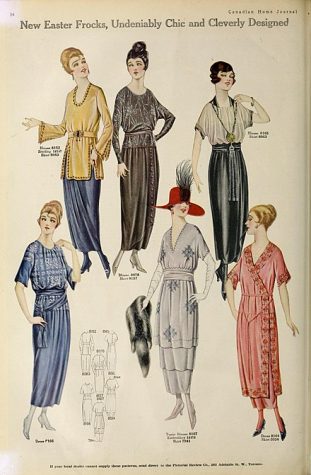Fast Fashion SUCKS!
December 13, 2022
Today, fashion is one of the biggest forms of expressing individuality. Whether it is through the bold choice of color or wearing multiple patterns together, each person can express themselves differently. At Canyon, fashion seems to be a pretty big deal. With just a quick glance around campus, you’ll see dozens of different fashion styles and art created with clothing. Though all of this creativity is great, the real issue is where the clothes are purchased. Today, a huge issue facing not only Canyon, but the whole world, is the fast fashion industry. Not only is it destructive to aquatic life and pollutes the planet, but it also puts the lives of workers in the industry at risk due to the extremely dangerous working conditions they are put under. A perfect alternative to help prevent all of these negative factors is to buy your future clothing second hand.
Fast fashion has become extremely popular due to its incomparable convenience. The industry offers the latest fashion trends, right in front of you, with easy and cheap access. The whole idea around the fast fashion industry is to offer the current fashion trends to consumers. The production and delivery are especially fast (hence the name fast fashion). The prices for fast fashion are generally greatly affordable, which makes it more available to a larger group of the population. All these factors play into the wants and needs of consumers, and further persuade them to resort to fast fashion.
Despite the convenient elements, when you take a closer look at the fast fashion industry, you’ll notice that its negative impacts greatly outweigh any positive components that may be present. Fast fashion is responsible for a good deal of the carbon emissions present in our atmosphere. 10 percent of our existing carbon emissions are caused by factories used for production, and based on statistics, that percentage is expected to rise to 50 percent by 2030. The industry also uses 93 billion cubic meters of water. Not only is this a huge waste of water, considering the water becomes polluted, but the amount of water they use is enough to fulfill the needs of 5 million people. Also, most clothing made from the fast fashion industry is made of synthetic fibers. This type of material is made at the cost of using fossil fuels, which are one of the main causes of global warming today.
Now that we’ve gone over the negative environmental aspects, let’s talk about how poorly the workers in this industry are treated. A majority of fast fashion clothing is manufactured in countries that don’t offer many rights to their citizens and have very large poor populations. Considering these factors, the industry takes advantage of them. To start, most employees are paid under half the minimum wage and are forced to work extremely long hours. Many workers feel obligated to keep these jobs because they can’t find other jobs and are in desperate need of income. Working conditions in these factories are generally very poor. Employees have to work in buildings with no ventilation and breathe in toxic fumes and fiber dust for up to 17 hours a day. Workers are often physically or verbally abused, and there are even children forced to work in these conditions.

The best way to show support against the fast fashion industry is to buy your clothing second hand. Whether it’s at your local thrift store or on online apps like Depop or Poshmark, any alternative to fast fashion is definitely much better. A lot of people feel that they don’t have the sort of creativity to find clothing that fits their personal style at thrift stores. I think it would surprise many people just how diverse the clothing you can find there really is. Between in-person locations and online stores, second hand shopping will always have clothing that you will like. There are so many options to choose from, and so many opportunities for you to try new styles with affordable prices. So next time you want to do some shopping, consider where you’re buying from and how it could affect our planet and the people living on it.
